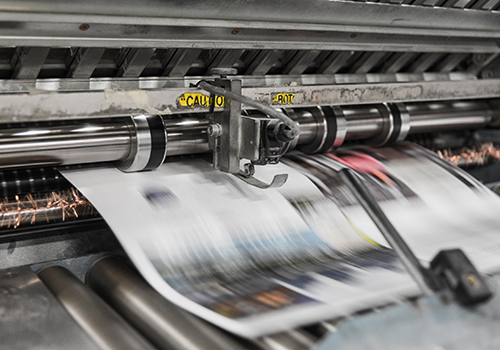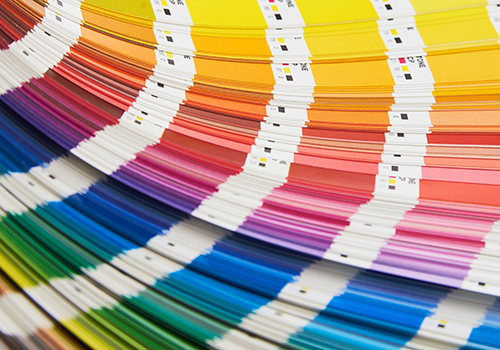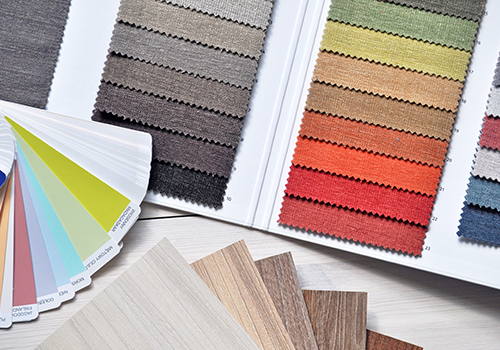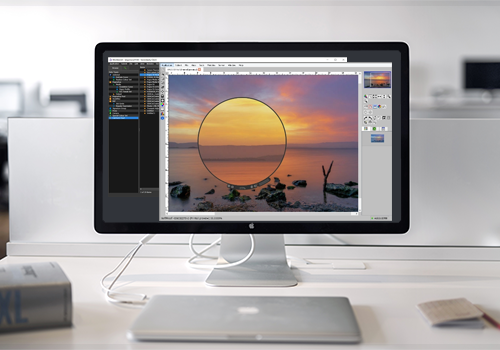How to Achieve Consistent Colours Across Different Devices
Industries including graphic design, photography, printing, and production face a fundamental dilemma: How to get consistent and accurate colours across a wide range of devices. The vibrant colours you see on your computer screen may not look exactly the same when printed on paper or captured in digital camera photos.

This whole colour mismatch problem comes from the fact that different devices have their own way of handling colours. Monitors, printers, and cameras each evolve at their own pace, resulting in differences in how colours are displayed. And if you add in things like hardware adjustments, colour profiles, and ambient lighting, you'll see even more factors that affect colour accuracy.
Enter colour-managed RIP software, where products like Serendipity Blackmagic and Megarip excel. These robust solutions bridge the gap between your design software and printing hardware. They ensure the colours you envision on your screen faithfully translate into tangible, printed products.
Understanding Colour Reproduction Variations
The complexity of colour reproduction arises from the various ways that electronic devices perceive and represent colour. Despite advanced technology, monitors, printers, and cameras still have many variations in colour interpretation. Monitors create colours using emitted light, printers use ink to produce colours, and cameras record colours that are affected by ambient light conditions – these differences contribute to colour deviation that we encounter.
Additional factors such as hardware calibration, colour profiles, and ambient light further increase the challenge of achieving consistent colour accuracy. Hardware calibration involves adjusting device settings to achieve optimal colour output, which may vary from device to device. Colour profiles, commonly known as ICC profiles, encapsulate the colour properties of a particular device and are used for accurate colour translation between devices. However, if these profiles are not carefully calibrated or managed, colour inconsistencies may occur. Ambient lighting conditions significantly affect our perception of colours. Diverse lighting situations, such as sunshine or manufactured lighting, can cast shifting colour temperatures on objects, leading to a perceived colour shift.
The results of inconsistent colour reproduction are far-reaching. In graphic design, a brand's identity hinges on uniform colour depiction. Indeed a slight variation in colour might harm the recognition of a brand's logo or packaging. For photography, exact colour rendering is crucial to truly convey emotions and subtle elements. In the printing industry, maintaining uniform colours across various print jobs is critical to uphold customer satisfaction and minimise wastage.
Colour Profiling
Colour profiling (or calibration) is an important process to ensure consistent and accurate colour reproduction across devices, from monitors and cameras to printers.
This process involves creating a standardised map that defines how colours should be displayed or reproduced on a specific device. When a device is colour-profiled, it ensures that the colours you perceive on one device remain consistent when viewed or printed on another.
The cornerstone of colour profiling is the International Color Consortium (ICC) profile. ICC profiles are standardised files that describe the colour characteristics of a device, such as its colour gamut, tone response, and colour temperature. These profiles act as translators, ensuring that the colours produced by one device are accurately converted to match the capabilities of another device. For instance, an ICC profile for a printer ensures that the colours you see on your monitor are faithfully reproduced in print.
Creating and applying accurate colour profiles involves a systematic approach that guarantees consistency across your workflow.

- Choose a Reliable Calibration Device: Invest in a reputable colour calibration device, such as a spectrophotometer. These tools measure and analyse the colours emitted or captured by a device, enabling precise calibration.
- Calibrate Your Display: Begin by calibrating your monitor. Connect the calibration device to your computer and follow the software instructions. The device will display a series of colours, and the calibration tool will measure the discrepancies between the displayed colours and their actual values. The software then generates an ICC profile that compensates for these variations.
- Calibrate Your Printer: If you're involved in printing, calibrating your printer is essential for accurate colour reproduction. Many printers come with built-in calibration tools, while some may require the use of third-party software. Follow the manufacturer's instructions or consult the third-party software's guidelines for precise calibration.
- Capture and Apply ICC Profiles: Once your devices are calibrated, capture their ICC profiles using the calibration device and software. These profiles encapsulate the unique colour characteristics of each device. Apply these profiles within your design software or printer settings to ensure a consistent and accurate translation of colours from one device to another.
- Regular Maintenance: Colour profiling isn't a one-time task. Devices age and environmental conditions change, which can impact their colour output. Regularly re-calibrate your devices and update your ICC profiles to maintain the highest level of accuracy.
Colour Matching Techniques
In a world filled with a variety of devices - think monitors, cameras, printers, and screens - the importance of nailing down consistent colour matching can't be stressed enough. Our eyes are incredibly adept at picking up even the tiniest shifts in colour, and when there are disparities in how colours show up, it can stir up confusion, misinterpretation, and a loss of that visual "wow" factor. Be it a company logo striving to hold its ground across different platforms or a photograph that needs to evoke precisely the right feelings, spot-on colour matching is the glue that binds creative vision and its real-world embodiment together.
Techniques for achieving consistent colours through colour matching:
- Sample-Based Matching: This technique involves manually comparing physical samples to achieve a desired colour match. It's often used in industries like textiles and automotive painting, where physical swatches are matched against production output.
- Device Linking: Device linking involves creating profiles that guide the conversion of colours from one device's colour space to another's. This technique minimises colour shifts and ensures consistent reproduction, especially when working with a range of devices.
- Spot Colour Libraries: Industries that demand precise colour reproduction, like printing and packaging, often rely on standardised spot colour libraries. These libraries provide a set of predefined colours that can be consistently reproduced across various devices and materials.
ICC-based colour matching has proven to be the foundation for accurate and consistent colour reproduction. ICC profiles are like tiny capsules that hold the intricate colour traits of devices, showcasing the colour range, how they respond to different tones, and other unique attributes. They ensure that the colours output by one device translate properly to the capabilities of another device.
Colour Management Workflow
A complete colour management workflow is an arranged sequence of steps designed to ensure colour consistency from creation to final output. It involves calibrating and profiling devices, translating colours accurately, and producing results that match the original design.
Steps involved in a typical colour management process:
- Device Calibration: Begin by calibrating your devices, such as monitors and printers. This involves adjusting the device settings to a standardised state, ensuring that colours are displayed or produced consistently.
- Profile Creation: Creating ICC profiles for your devices follows calibration. ICC profiles encapsulate the unique colour characteristics of each device. These profiles act as guiding maps, ensuring colours are accurately translated between devices.
- Design and Editing: During the design phase, use calibrated and profiled monitors. This ensures that the colours you see while creating remain faithful throughout the workflow.
- Soft Proofing: Employ soft proofing techniques to preview on-screen how your design will appear on different devices or mediums. Soft proofing allows you to make necessary adjustments before the final output.
- Translation and Conversion: When transferring designs from one device to another, colour management software comes into play. This software translates colours from one colour space to another, preserving accuracy through rendering intents and gamut mapping.
- Printing or Display: Whether it's printing a photograph or showcasing a digital artwork on a screen, the colour management workflow ensures that the colours produced match the intended design.
- Quality Control: Regularly monitor and verify the accuracy of your colours using test prints or colour charts. This step guarantees that your devices and profiles are consistently performing as expected.

Colour management software optimises colour conversion, rendering intents, and gamut mapping, ensuring that the intricacies of colour reproduction are seamlessly handled. It enhances efficiency by automating processes that would otherwise be labour-intensive, saving valuable time and reducing the margin for error.
From Design to Print
Colour consistency is essential for the success of creative projects in graphic design, photography, and printing. Accurate colour reproduction across all devices and media ensures that the intended visual message is conveyed effectively.
RIP software, equipped with ICC profiles, rendering intents, and gamut mapping techniques, plays a critical role in maintaining colour consistency throughout the creative process. It ensures that colours are translated accurately from the original design to the final printed output.
Achieving consistent and accurate colours requires a combination of technical expertise and artistic judgement. The goal is to preserve the integrity of the creative vision and prevent unwanted colour shifts. Colour-managed RIP software provides the tools and technology necessary to achieve consistent and accurate colour reproduction. This software enables creative professionals to realise their vision with confidence.



